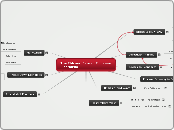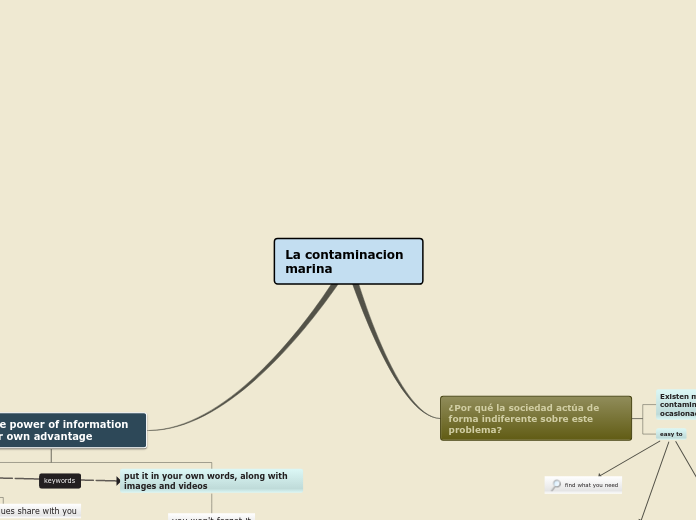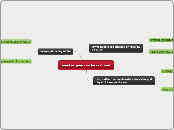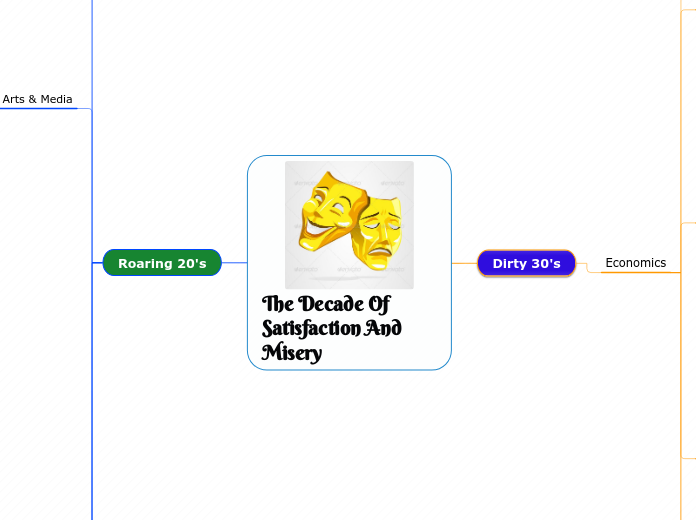The Ebb and Flow of Economic Liberalism
Free Market Economy
The free market economy is one of the pillars of modern economics. It is based upon the principles of supply and demand guiding the economy, private ownership of all industries and property, and a lack of government involvement in the economy. True free market economies do not exist, as most economies are mixed; they share characteristics of both planned and free market economies. This concept forms the basis for various economically right wing ideas, such as capitalism, monetarism, and trickle-down economics.
Source- Notes, Perspectives on Ideology Textbook.
Trickle-Down Economics
The theory of trickle-down economics was implemented by Ronald Reagan and Margaret Thatcher in the 1980's. It was an attempt to jumpstart the economy by lowering taxes on the wealthy, however in the United States the result was the national debt being doubled.
Source- Notes, Perspectives on Ideology Textbook.
Thatcherism
Reaganomics
Monetarism
Monetarism is an economic theory which states that the best way to encourage economic growth, limit unemployment, and limit inflation is to give control of money to wealthy individuals and industry. The goal is to cause the trickle-down of this wealth through the economy, eventually to the working class by way of employment. This theory is associated with the classical liberal thinkers Milton Friedman and Friedrich Hayek. Principles of monetarism include the privatization of crown corporations, reduction of taxes, and decreasing government involvement in the economy.
Source- http://en.wikipedia.org/wiki/Monetarism
Mike Harris
Ralph Klein
Privatization of Crown Corporations
Friedrich Hayek
Milton Friedman
Blair's "Third Way"
Tony Blair, of the U.K Labour Party ran for office on a platform which was known as the "Third Way". It was a group of centrist ideas which included some aspects of Thatcherism, while still maintaining some social programs. The "Third Way" was a compromise between Keynesian economics and monetarism, and ended up with higher government spending on healthcare and education, and a minimum wage. On the other hand, tuiton was introduced for post-secondary education.
Source- Notes, Perspectives on Ideology Textbook.
Sweden's Economic Liberalism Today
Sweden has a economic system which embodies the goals of Blair's "Third Way". This mixed system has a high level of government involvement, yet maintains private industry as well. 90% of industry in Sweden is privately owned, however a wide array of social programs help to maintain economic equality. Some of these programs include universal healthcare, nearly free university education, strong unemployment benefits, a minimum of five weeks of vacation time for full time workers, and a nationalized liquor system.
Source- Perspectives on Ideology Textbook.
The Netherlands' Polder Model
The Polder Model is an economic model in the Netherlands which is based upon the ideas of compromise and co-operation. All big economic and social decisons in the Netherlands must be negotiated between the government, employment organizations, and labour unions. This is an attempt to ensure that everyone has a say in important matters. The Polder Model holds the same attitude of compromise as does Blair's "Third Way".
Source- Perspectives on Ideology Textbook.
Chad's "Third Way"
Chad's "Third Way" describes the manner in which this nations oil reserves are managed. A law was put in place to dictate how the profits from oil development must be spent. 80% of all revenue derived from oil must be spent on health, education, and rural infrastructure. This is a way of ensuring that natural resource development benfits all people in the nation, not just wealthy, multinational corporations.
Source- Notes.
Kenya's Harambee
Kenya's Harambee is a collectivist program, which in english literally means "let us all pull together". The idea is to ensure development in the country is beneficial to everyone. Principles include that the product should benefit the public rather than just one individual, and that projects should maximize the use of local resources that would otherwise be unused or considered too expensive. Examples of projects completed through Harambee are schools, medical centres, roads, etc. This idea relates to Chad's "Third Way" because both are collectivist in nature, by attempting to benefit society as a whole rather than just certain individuals.
Source- Perspectives on Ideology Textbook
Postwar Economy in Canada
The postwar Canadian economy was a period where the economic thinking shifted to the left. Several programs were started by the government which were characteristic of the welfare state, and included the universal healthcare system , the Canadian Pension Plan, Investment Canada, the Canadian Radio and Television Commission, and Atomic Energy of Canada Limited. These programs all increased the role of government in the Canadian economy.
Source- Notes.
Keynesian Economics
Keynesian economics is an economic theory proposed by John Maynard Keynes. He proposed that in times of economic depression, governments should increase their spending, which could be in the form of stimulus spending, social programs, etc. In times of prosperity, however, he believed that governments should cut back their spending and repay the debt which accumulated during the depression. Keynes' ideas had a significant impact on post-war economics, and his ideas were utilized by U.S president Barack Obama during the recent recession.
Source- Notes.
America's Economic Liberalism Today
Barack Obama
Collectivist Thinking
Collectivist thinking is the idea of placing a greater value on society as a whole, rather than the individual. Important principles can include economic equality, co-operation, public property, serving the collective interest, and a sense of collective responsibility. The extent to which this idea is followed varies greatly, ranging from communist ideologies to the mixed economies of most countries today. Collectivism forms the basis for all left-wing ideologies.
Interventionism
Social Safety Net Programs
British Labour Party
In 1942, Sir William Beveridge presented a report to the British Parliament which recommended that the role of government be expanded to people in society with more economic security. In 1948, the British Labour Party government adopted several of his recommendations. Programs created during this time include the National Insurance Act, the National Assistance Act, and the National Health Service Act. The period of time from after the first world war until the 1970's became known as the postwar consensus, because each government in power, regardless of party, maintained these social programs.
Source- Perspectives on Ideology Textbook.
The Postwar Consensus
British Welfare State
Stagflation
Stagflation is defined as a period when an economy has entered into depression, but inflation keeps rising higher. It causes a literal standstill of the economy, because at the same time when people are losing their jobs and have less money to spend prices keep rising.Stagflation hit the British economy in the 1970's, and resulted in even the Labour Party beginning to doubt the wisdom of high government spending. This marked a return of the Ebb and Flow of Economics to the right.
Source- Notes.









